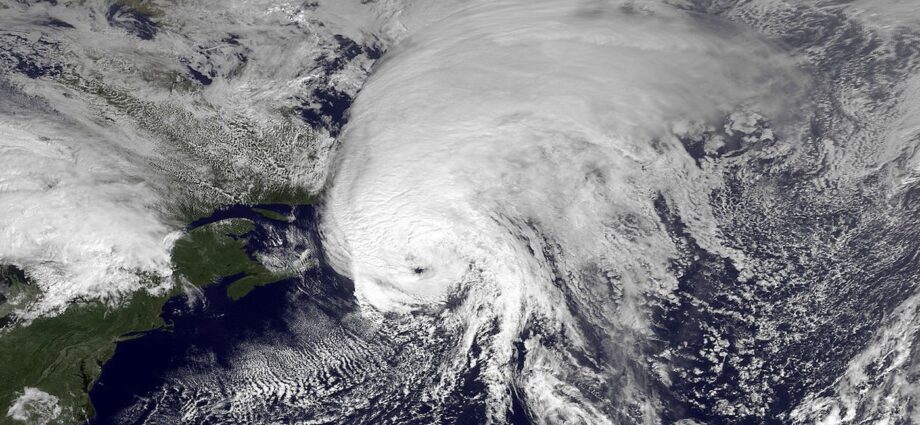
By Peter Jackson, Local Journalism Initiative Reporter, The Telegram
September 29, 2022
No one could have predicted hurricane Fiona would be the strongest storm on record to hit Newfoundland and Labrador.
But the fact that it happened in an era of global warming should come as no surprise.
“Changes in large-scale wind patterns favour tropical cyclone trajectories that are further north and eastward, like the one taken by Fiona,” Penn State climatologist Michael Mann told The Telegram via email Monday, Sept. 26, summarizing his own research in the field. “At the same time, those storms are likely to be stronger than they otherwise would have been due to warmer ocean waters and greater potential for intensification. That spells bad news for the (Atlantic) provinces, unfortunately.”
Mann, author of several books, including “The Hockey Stick and the Climate Wars,” cited studies in which he and other climatologists have seen a discernible shift in the pattern.
A 2014 study led by Jim Kossin of the University of Wisconsin-Madison found that the latitude at which tropical cyclones reach their greatest intensity is gradually shifting from the tropics toward the poles, at a rate of about 33 to 39 miles per decade.
The phenomenon may have played a role in hurricane Sandy’s slamming into New Jersey and New York in 2012, flooding parts of Manhattan’s subway system and causing almost $70 billion in damage.
It has clearly had a part in the increasing devastation in Newfoundland and the Maritimes with such high-energy storms as Juan, Igor and now Fiona.
Moving parts
Memorial University climatologist Joel Finnis says there’s a lot that can’t be predicted regarding how hurricanes will behave.
“When it comes to predicting what’s going to happen with hurricanes, it’s been a pretty messy, complex process. There are a lot of possibilities in there,” he said Monday.
“Any storm like this, there’s a lot moving pieces. So, for something like this to happen, you basically have to have a strong hurricane that is given a chance to move towards us quickly, but not too quickly. And for a storm surge like the one we saw last week, a couple of other things come into play, too. The path of the storm was basically ideal to push water between Cabot Strait and the Strait of Belle Isle, and just pile water up right around Port aux Basques. So it was a combination of things.”
Several houses were destroyed when the sea swept through the town on the southwest corner of the island. One woman lost her life.
“Some of the larger claims that we could make we’re fairly confident in, like there will be more energy available to drive hurricanes in the future,” Finnis said. “What that will mean in terms of frequency vs. intensity, there’s been some conflicting research along those lines for the last 20 years.”
Nonetheless, Finnis said hurricane Fiona should be a wakeup call.
“If a record-breaking low-pressure system in high latitudes in Canada isn’t an alarm bell, I don’t really know what is.”
Doddling
Finnis said he is frustrated by the lack of concrete action taken toward climate change, both locally and around the world.
“We’ve been doddling when it comes to climate action for my entire career,” he said. “It’s been 25 years of working in environmental sciences and atmospheric sciences and climate sciences, and every time I think we’re going to take serious action, we take a few steps back instead.”
The signs are everywhere in Canada, he said. This year alone, as well as the devastation of Fiona, post-tropical storm Earl dumped massive amounts of rain in parts of this province.
“Despite the fact we’ve had more extremes in the last couple of years in Canada — record-breaking high temperatures, the whole discussion about atmospheric rivers when we got huge amounts of flooding on the west coast last year, these hurricanes this year — the willingness to actually make concrete sacrifices and change our lifestyles and to push governments to actually make meaningful change still doesn’t seem to be manifesting. We’re still talking about looking for the win-win-win situation that will cost us nothing.”
Technology alone won’t save us, Finnis says, because it’s a question of lifestyle changes on a large scale.
“We don’t have to go back to living in huts, but we can start doing things like using public transportation, riding our bikes, living smaller-scale lives. We don’t have to go on multiple plane flights a year. We can make a choice as to what we are consuming and where it’s coming from. It’s a lot about choice,” he said.
Pointing fingers is a copout, he added.
“Even worse is when people start saying things like, oh, it’s China’s problem or it’s India’s problem, or it’s places where the population is still growing,” Finnis said.
Subscribe to our newsletter.
“It puts the onus on countries that have not benefitted to the same degree from fossil fuel consumption and created the problem in the first place, while also shifting the responsibility from people who have benefitted immensely from the problem we’ve produced.”


